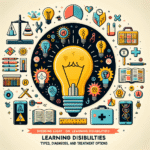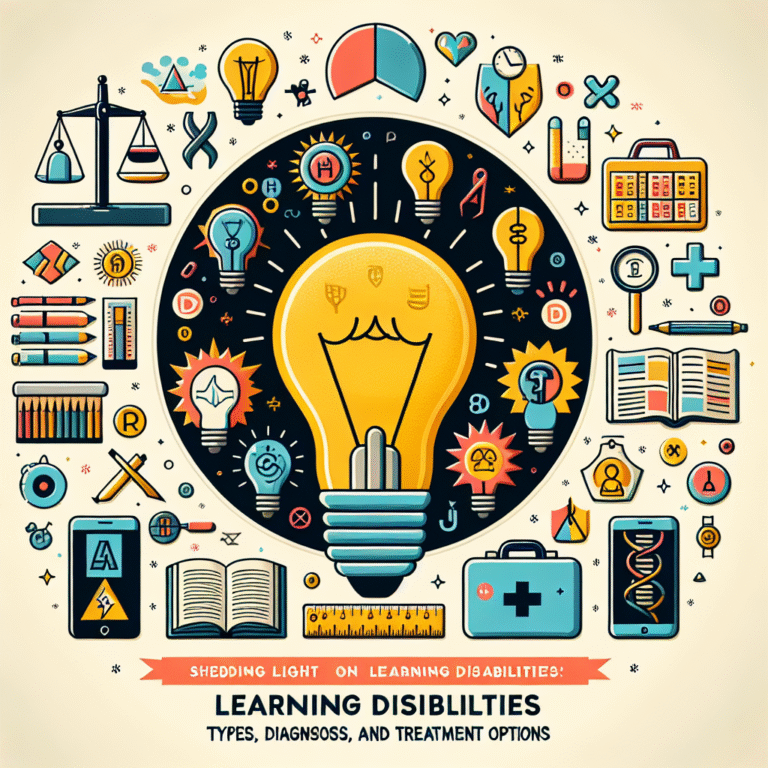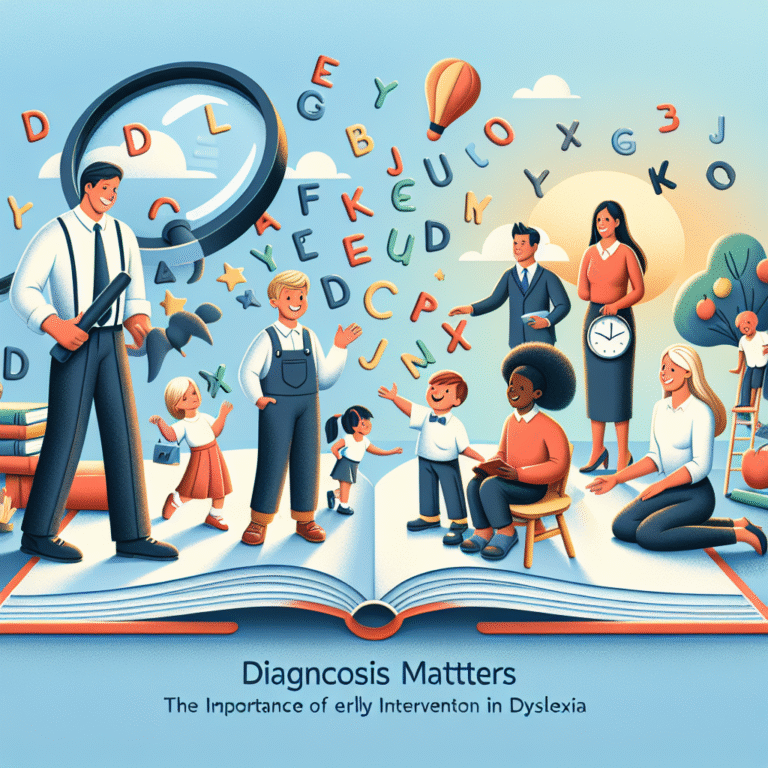Understanding the Difference: Learning Disabilities vs. ADHD – Your Ultimate Guide
Introduction
In today’s fast-paced educational landscape, understanding the nuances of various neurological and cognitive challenges is more important than ever. Students, parents, and educators often find themselves puzzled by the terms "learning disabilities" and "ADHD" (Attention-Deficit/Hyperactivity Disorder). While both can significantly impact a child’s academic performance and daily life, they are distinct in their nature and management. Understanding the difference between learning disabilities vs. ADHD is crucial for fostering a supportive environment for those affected by these conditions. This ultimate guide will shed light on these differences, offering insights, case studies, and actionable recommendations for navigating these complex topics.
What Are Learning Disabilities?
Defining Learning Disabilities
Learning disabilities (LD) are neurodevelopmental disorders that affect how individuals receive, process, or express information. They can manifest in various forms, impacting skills such as reading (dyslexia), writing (dysgraphia), and math (dyscalculia). Learning disabilities are often lifelong conditions that can hinder academic achievement but do not reflect an individual’s overall intelligence.
Types of Learning Disabilities
To further understand the diversity of learning disabilities, here are the most common types:
- Dyslexia: Impairs reading fluency and comprehension due to difficulties in recognizing and processing letters and sounds.
- Dyscalculia: Affects the ability to understand and work with numbers, making simple calculations challenging.
- Dysgraphia: Pertains to difficulties with writing, including poor handwriting, trouble with spelling, and organizing thoughts on paper.
Case Study: Sarah’s Journey
Background: Sarah is a 10-year-old girl diagnosed with dyslexia. Although Sarah is intelligent and creative, she struggles with reading at grade level.
Analysis: Sarah’s case illustrates the challenges faced by children with learning disabilities. Despite being bright, Sarah finds reading daunting. With the right interventions—such as specialized tutoring and assistive technology—Sarah can develop effective coping strategies, enabling her to reach her potential. This highlights the importance of early identification and tailored support strategies when understanding the difference between learning disabilities and ADHD.
What Is ADHD?
Defining ADHD
ADHD, or Attention-Deficit/Hyperactivity Disorder, is a neurological condition characterized by patterns of inattention, hyperactivity, and impulsivity. Unlike learning disabilities, ADHD affects a person’s ability to control their focus and behavior, impacting their capacity to complete tasks and follow through on instructions.
Symptoms of ADHD
Key symptoms of ADHD can include:
- Inattention: Difficulty maintaining focus, making careless mistakes, and forgetfulness.
- Hyperactivity: Excessive movement, fidgeting, and difficulty staying seated.
- Impulsivity: Acting without thinking, interrupting others, and difficulty waiting one’s turn.
Case Study: Jake’s Journey
Background: Jake, a 12-year-old boy diagnosed with ADHD, has trouble focusing during lessons and often disrupts class activities.
Analysis: Jake’s experience underscores how ADHD can influence social interactions and academic success. While he has a lively personality, his impulsive nature occasionally leads to conflicts with peers. With behavioral therapy and a structured environment, Jake’s ability to focus improves, which is essential for understanding the differences between learning disabilities and ADHD. This emphasizes that while ADHD can result in behavioral challenges, these can be mitigated with appropriate interventions.
Key Differences Between Learning Disabilities and ADHD
Onset and Development
- Learning Disabilities: Often identifiable from a young age, learning disabilities are usually recognized in formal educational settings when a child begins to struggle academically.
- ADHD: Symptoms often become apparent as early as preschool, but a diagnosis may be delayed due to varying behavioral manifestations in different settings.
Nature of Impact
- Learning Disabilities: Primarily affect academic achievement and skills specific to reading, writing, or math. Individuals may perform well in other areas.
- ADHD: Affects daily functioning in various contexts, including home, school, and social situations. It can lead to broader challenges relating to organization and time management.
Identification and Diagnosis
- Learning Disabilities: Diagnosed through specific assessments that evaluate academic skills in relation to cognitive abilities.
- ADHD: Diagnosed through behavioral assessments and reports from parents, teachers, and other caregivers about a child’s behavior in different settings.
Overlapping Traits and Comorbidities
Recognizing that some individuals may present characteristics of both learning disabilities and ADHD is crucial in developing effective support strategies. For example, a student with both dyslexia and ADHD might face compounded challenges in school, necessitating a comprehensive and tailored intervention approach.
Importance of Comprehensive Assessment
A thorough evaluation is essential to differentiate between learning disabilities and ADHD effectively. Comprehensive assessments can help identify not only the presence of these conditions but also any overlapping issues that may affect a child’s learning experience.
Effective Strategies and Interventions
Strategies for Supporting Learning Disabilities
- Individualized Education Plans (IEPs): Tailored plans to address the unique needs of students with learning disabilities, setting specific educational goals.
- Assistive Technology: Tools such as text-to-speech software that provide additional support for reading and writing tasks.
- Specialized Tutoring: Focused instruction strategies designed to improve specific skills like reading fluently or solving math problems effectively.
Strategies for Supporting ADHD
- Behavioral Therapy: Helps children develop self-regulation and organizational skills.
- Structured Routines: Maintaining a consistent daily routine can help manage symptoms of ADHD by providing predictability.
- Mindfulness Practices: Techniques such as meditation and focused breathing can assist in developing concentration and emotional regulation.
Conclusion
Understanding the difference between learning disabilities and ADHD is essential for educators, parents, and anyone involved in supporting children’s development. Both conditions require empathy and tailored strategies to foster success. By recognizing their distinct characteristics, we not only empower affected individuals but also facilitate a more inclusive and effective educational environment. Emphasizing early identification, intervention, and the dissemination of comprehensive resources can transform challenges into opportunities for growth and achievement, ensuring that every child reaches their full potential.
FAQs
1. What are the key differences between learning disabilities and ADHD?
Learning disabilities primarily impede specific academic skills such as reading or math, while ADHD impacts attention and behavior across various settings.
2. How can I identify if my child has a learning disability or ADHD?
Both conditions exhibit distinct symptoms; academic struggles may indicate a learning disability, while persistent inattentiveness and impulsivity may suggest ADHD. Consult a specialist for formal assessments.
3. Can a child have both a learning disability and ADHD?
Yes, it is common for children to have co-occurring conditions, which can complicate their educational experience and require a multifaceted intervention approach.
4. How do schools support students with learning disabilities or ADHD?
Schools often implement IEPs, provide specialized tutoring, and offer accommodations such as extra time on tests to support students’ unique learning needs.
5. Are there any effective treatments for ADHD?
Behavioral therapy, medication, and structured routines are commonly used to help manage ADHD symptoms and improve daily functioning.
6. Can parents play a role in supporting their child’s learning challenges?
Absolutely! Parental involvement is crucial in advocating for educational resources, implementing home strategies to boost learning, and fostering a supportive environment.
This comprehensive guide provides an enriching perspective on understanding the difference between learning disabilities and ADHD, aiming to empower and educate readers about these important topics. By fostering understanding and support, we can create environments that allow every child to thrive.









